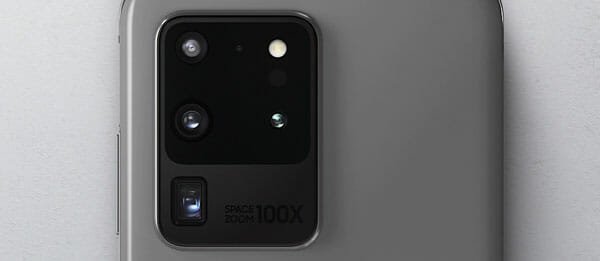Xiaomi Redmi Note 3 [Snapdragon] Vs LeEco Le1s : Clash Of The Titans
On one side, a device from the fourth largest smartphone maker’s promise. Other side, new and fresh endeavor to make a mark in the market. If two such rivals competing for their stand, what else would be more interesting than this? I know you might’ve guessed already what I am talking about – Xiomi Redmi Note 3[ Snapdragon variant] and Le1s From LeEco.

Design, Display and Dimensions
On both devices, Xiaomi Redmi Note 3 and LeEco Le1s, the display specifications are quite similar. On exterior side, both are made of metal, curved design with premium looks. Display wise the specs are same too – Xiaomi Redmi Note 3 got a 5.5 inch FHD (1920 x 1080 resolution) IPS display with 178 degree viewing angles and LeEco Le1s has a 5.5 inch 1920 x 1080 pixels FHD display with 500 nits brightness. In a world where smartphone displays are increasing day by day, appropriate size bar is going up. We had already seen devices from LeEco (and when it was LETV) containing more than 6 inch screen and tablets are already there. So, 5.5 inches can be thought as legit and you wouldn’t find any issue as far as the quality of the screens in these two guys. Both displays would give you appropriate brightness, vivid color production and nice viewing angles. If you take a look at the exterior body dimensions, Redmi Note 3 measures 150 x 76 x 8.65 mm and weighs 164 grams in hand, while Le1s turns out to be 151.1 x 74.2 x 7.5 mm and Weighs 169 grams. Clearly you would find Redmi Note 3 lighter, even though by a small margin, which evidently shows the experience that how carefully Xiaomi has crafted the device with bigger battery than Le1s. On thickness and weight, the vote would go to Redmi Note 3. Both have Fingerprint scanners on their back to give you enhanced experience. Overall, these two devices are very much similar in exterior department and both would give you great experience.
Beneath the Hood
Under the hood, Xiaomi Redmi Note 3 has a 1.8 GHz 64-bit Hexa-Core Snapdragon 650 ( 4x 1.2GHz ARM A53 + 2 x 1.8 GHz ARM A72 ) SoC coupled with Adreno 510 GPU and LeEco Le1s features 2.2GHz Octa-Core Mediatek Helio X10 MT6795T SoC paired with PowerVR G6200 GPU. Even though both chips would perform top notch and an average user almost cannot tell the difference in performance that often, if you want to compare them by benchmark, vote should go to Le1s. Being introduced as a first attempt in the market, LeEco packed high powered chipset in Le1s. On the software side though, both companies have their own customization skins on top of Android Lollipop. Redmi Note 3 comes with the classic Xiaomi’s MIUI 7 skin while Le1s comes with EUI 5.5. Even though running Lollipop could be a down side here, we can expect an OTA update soon.
Looking at memory department, Le1s from LeEco has 3 GB RAM and 32 GB flash storage and Xiaomi’s Note 3 comes in two variants – 2 GB RAM with 16 GB storage / 3 GB RAM with 32 GB Storage. They share a common thing here as well – storage in both cannot be expanded. It is okay to live with a 32 GB storage device, but in long run if you want to store your favorite multi media content on your phone, you may find it difficult. So, you need to consider that. Overall, both devices are great performers without giving you any lag and you can do multi tasking, high -end graphic gaming and HD video playback without hesitation.
Camera Department
On paper, both cameras have pretty nice specs too. Xiaomi’s Redmi Note 3 has 16MP PDAF camera (f/2.0) having Dual Tone LED flash, FHD video recording and 120 fps slow motion on the back and 5 MP front facing camera (f/2.0)with FHD video recording on the front; while LeEco’s Le1s features a 13MP PDAF ISOCELL sensor (f/2.0) with LED flash, 4K video recording @ 30fps and 720p @120 fps on the back and 5 MP Samsung S5K5E2 85-degree wide-angle lens on the front side.
Both cameras essentially have their pros and cons. On paper, even though Xiaomi sensor has more pixels, not having 4K video support could be a down side for many people. That said, both sensors are great performers giving you some quality shots and videos.
Connectivity and Others
If you consider battery back up is an essential in your techlife, then you should choose Redmi Note 3 because it has 4000 mAh battery as opposed to Le1s 3000 mAh battery. Le1s battery life could primarily depend on how you use your device as it has to handle FHD display and Octa core CPU. But if you are an average user, both devices can give you a day back up time.
Coming to connectivity, both are 4G enabled Dual SIM devices supporting Bluetooth 4.0, Wi-Fi 802.11 b/g/n/ac bands, GPS and Infrared sensors. Coming as a fresh attempt, Le1s includes some advanced options such as USB Type-C and MHL 2.0 support.
Ending Thoughts
The interesting thing about these two devices is the price tag they come attached with – Both are nearly priced at 10k. So, if you really want get suggested which one you should go for, for me it is really tough and depends on your needs as both devices have their pros and cons and interestingly similar in many aspects. If you like Xiaomi already and looking for a new device or an upgrade, Note 3 can be you pick or if you want to try something new from a new company (not that new though, rebranded) and looking for sustainable performance you can pick Le1s. Sure thing which can be stated without hesitation though is how devices are pushing the limits of smartphone capabilities and becoming available at low price bracket. As far as Indian smartphone market is concerned, this is really good time and deserves a welcome.



